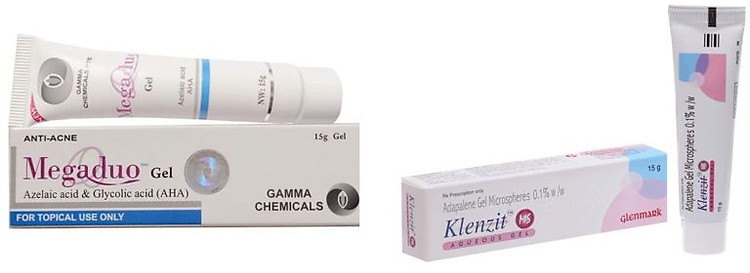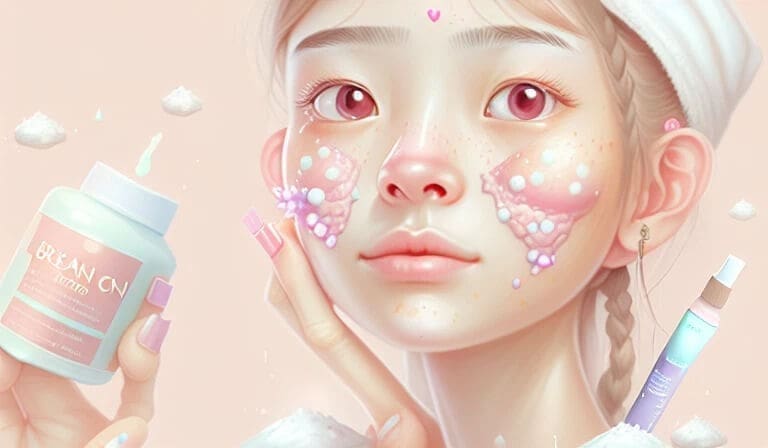Acne has been a problem for centuries, from ancient times to the present day, in both the East and the West. There are many different types of acne that can bother both women and men, including acne vulgaris, comedones, and cysts. There are countless products for treating and caring for acne-prone skin. Some products are made with natural ingredients, while others are based on scientific research. Today, I would like to talk about the Klenzit MS topical acne treatment cream.
1. What kind of acne does Klenzit ms use?
Klenzit-MS is a topical acne treatment cream that is indicated for the treatment of mild to moderate acne vulgaris in patients aged 12 years and older. It is also effective in treating hidden acne.
Klenzit-MS can be used to treat severe acne vulgaris. It may also be used for other conditions as determined by a healthcare professional.
Klenzit-MS is a retinoid-like compound, a derivative of vitamin A. However, it helps skin cells to regenerate faster and reduces the formation of blackheads.

2. Ingredient
Adapalen (microspheres) 0.1% Tá dược: Dinatri edetat, Carbomer 940, Propylen glycol, Methyl hydroxy benzoat, Poloxamer 407, Phenoxyethanol, Natri hydroxid, H2O.
3. Dosage
3.1 Dosage of klenzite 0.1 for adults
Apply Klenzit to the acne area once a day before going to bed. Apply a thin layer, avoiding the eyes, lips, corners of the nose, and mucous membranes.
During the day, you can use lotion or moisturizer on the remaining acne-free skin areas.
3.2 Dosage of klenzite 0.1 for kids
Do not use it for children under 12 years old. Information on the effects on children 11 years of age and younger has not been researched and published.
Children from 12 to 18 years old: Wash the affected area and apply cream once a day before going to bed. Apply a thin layer, avoiding the eyes, lips, corners of the nose, and mucous membranes.
4. Caution when using klenzit ms in the following cases
Do not apply Klenzit-MS to areas of the skin that are cut, scratched, chapped, or sunburned.
Do not use in children under 12 years of age, pregnant or nursing women.
Patients should minimize exposure to sunlight, including tanning beds. Use sunscreen and other protective measures whenever prolonged exposure cannot be avoided. Treatment should be discontinued if sunburn occurs and should not be resumed until the skin has completely healed. Patients may also be more susceptible to irritation from harsh weather conditions (wind or cold).
Klenzit-MS may cause redness, dryness, scaling, burning, and itching, which typically begin in the first 2 to 4 weeks of treatment but gradually subside with continued use. Patients with excessive irritation should use the medication less frequently, discontinue treatment for a short period of time, or discontinue use altogether.
Klenzit-MS may make the skin more susceptible to the irritating effects of astringents, soaps, detergents, and other chemicals and facial cosmetics that contain alcohol or have a strong drying effect. Caution should be exercised when using these medications with Klenzit-MS. Products containing alpha hydroxy or glycolic acids should be avoided.
Klenzit-MS should not be used around the eyes, mouth, corners of the nose, mucous membranes, or on cuts, scratches, or chapped skin. Contact with the eyes can cause eye reactions such as swelling, conjunctivitis, and irritation.
Waxing should not be performed on skin that has been treated with Klenzit-MS.
4.1 Note about the impact of klensite on hidden acne
In the beginning, acne may worsen for a few weeks due to the action of Klenzit MS topical cream. This is because the drug is working on the hidden acne under the skin. The drug accelerates the maturation process of hidden acne, so you may temporarily have more acne.
The drug has a slow and steady effect, so the results of treatment are usually seen after 8 to 12 weeks of treatment.
4.2 Use klenzit ms properly
Wash your hands and the affected area before applying the medication. Apply a thin layer of the cream to the affected area using your clean finger or a clean cotton swab.
Only use this medication on the skin. Do not apply to the inner lips or inside of the nose/mouth. Do not apply to cut, scratched, sunburned, or chapped skin.
Avoid getting the medication in your eyes. If the medication gets in your eyes, flush with plenty of water. Call your doctor if there is any burning sensation that does not subside. Wash your hands after using the medication to avoid accidentally getting it in your eyes.
Use once a day/as directed by your doctor. Be sure to use on a regular schedule every day. Taking more than the prescribed dose can increase the likelihood of redness, dry skin, and burning.
This medication is packaged in different strengths and forms (e.g., gel, cream, solution). The best type of medication for you to use will depend on your skin condition and your response to the therapy. Notify your doctor if your condition does not improve or worsen.
